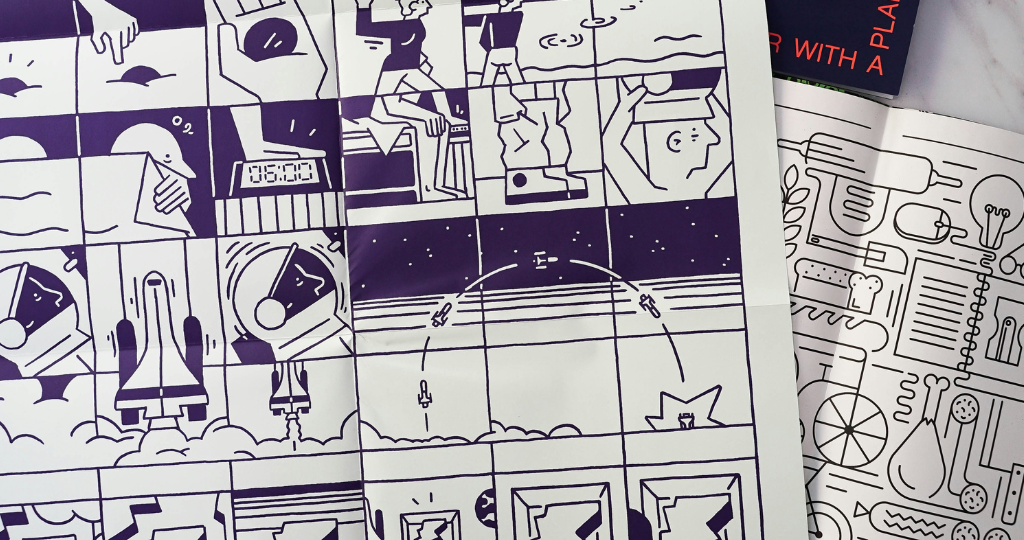In 2024, web design plays a vital role in reflecting your brand’s identity and values. With 75% of users judging a company’s credibility based on its website design, it’s very important to get it right. In this blog we will show you how to align your web design with your brand. We’ll help you define your brand, maintain visual consistency, and ensure your site is user-friendly and responsive. Let’s get started on designing a website that effectively represents your brand.
Understanding Brand Language in Web Design
Brand language in web design refers to how a website’s tone, style, and voice align with the brand’s identity. This alignment underscores the importance of branding in web design by ensuring that the site feels consistent and authentic to visitors.
When done right, brand language makes the site’s appearance and content match the brand’s personality. This consistency makes the brand easier to remember and trust. If a brand is known for being friendly and casual, its website should use a warm, informal tone and approachable design. This creates a smooth experience for visitors and makes them feel more engaged. Effective brand language in web design strengthens the connection between the brand and its audience, leading to better user experiences and stronger brand loyalty.
Key Takeaways
- Define your brand identity clearly to guide your website design.- Share your brand story to create an emotional connection with visitors.
- Maintain visual consistency to reinforce your brand’s message.
- Ensure your website is user-friendly for a smooth visitor experience.
- Implement responsive and adaptive design for seamless use on all devices.
- Listen to user feedback to continually improve your website.
How to Web Design for Your Brand?
Building a website that reflects your brand requires careful planning and design. To effectively showcase your brand online, follow these key steps to make your website align with your brand identity and meet user needs.
1. Define your brand identity
Start by clearly defining your brand’s core attributes, including its values, mission, and personality. This identity will guide every design choice, from colors and fonts to imagery and language. Consider what makes your brand unique and how you want to be perceived by your audience. For example, if your brand is eco-friendly, use green colors and nature-inspired visuals. A strong brand identity helps create a consistent look and feel across your website, making it easier for visitors to understand and remember your brand.
2. Tell your brand story
Use your website to share your brand’s story in an engaging way. This could include your history, values, and mission. Highlight what sets your brand apart and why it matters to your audience. Storytelling creates an emotional connection, helping visitors relate to your brand on a personal level. Incorporate elements like company milestones and customer testimonials. This approach not only informs but also builds trust, making your brand more relatable and memorable.
3. Maintain visual consistency
Make sure that every visual element on your website aligns with your brand identity. This involves maintaining uniform colors, fonts, and imagery across the entire site. Visual consistency helps reinforce your brand’s message and creates a professional appearance. Use the same color scheme and typography in your headers, buttons, and content. This uniformity enhances your brand’s recognition and also makes your site easier to navigate, providing a smoother user experience.
4. Make it user-friendly
Design your website with the user in mind. It should be easy to navigate, with clear menus, straightforward content, and intuitive functions. Consider the user journey from landing on the site to completing an action, like making a purchase or signing up for a newsletter. Adopting a mobile first design approach ensures your site is optimized for mobile devices, which is essential in the current digital market. Features like search bars, well-organized content, and accessible contact information contribute to a positive user experience. A user-friendly site keeps visitors engaged and encourages them to return.
5. Implement responsive and adaptive design
Your website should work well on all devices, including desktops, tablets, and smartphones. Responsive design adjusts the layout to fit different screen sizes, while adaptive design offers specific layouts for various devices. This flexibility is important in providing a seamless experience for users, regardless of the device they use. A well-optimized website enhances accessibility and usability, improving overall user satisfaction and engagement.
6. Listen to user feedback
Regularly collect and analyze feedback from your website visitors. This can be done through surveys, comments, and user testing. Pay attention to suggestions and complaints to identify areas for improvement. User feedback helps you understand what works well and what needs to be adjusted. By making changes based on this input, you can enhance your website’s functionality and user experience, ensuring it continues to meet the needs of your audience.
Conclusion
A website that truly reflects your brand works like a dynamic platform that tells your story and engages your audience. It should resonate with your brand’s personality, values, and goals, creating a memorable and authentic experience for users. The design, functionality, and content all play a significant role in making your website an effective tool for brand communication and customer engagement.
If you want a website designed to speak out your brand identity, we can help. We are a leading web design company in Dubai providing web design solutions that align with the brands we work with. Our web design team ensures that every element of your website aligns with your brand identity and offers the best engaging user experience. Partner with us to develop a website that looks impressive and also functions flawlessly across all devices, which will improve user satisfaction and brand loyalty.






